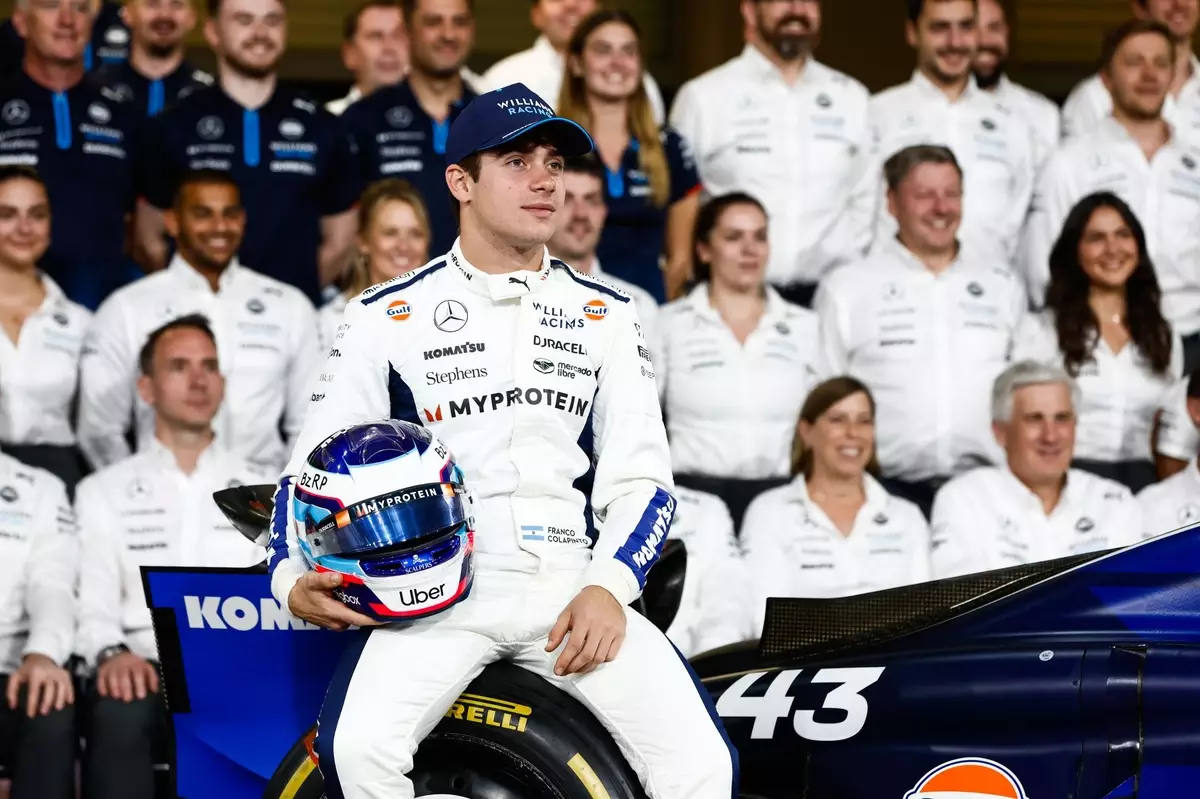In the fast-paced and often unforgiving world of Formula 1, drivers can experience substantial swings in their fortunes depending on a myriad of factors, ranging from the vehicle’s performance to external pressures. This has been starkly evident with Franco Colapinto’s recent stint as a driver for the Williams team. Initially, Colapinto’s arrival was marked by promising results. Taking over from Logan Sargeant, Colapinto quickly made a name for himself during his early races, notably in Monza. He demonstrated not just raw speed but also a remarkable composure under the intense scrutiny unique to this sport—qualities that caught the attention of major players like Red Bull. However, the narrative took a turn as the season progressed.
Colapinto’s initial races were characterized by impressive performances that garnered five critical points for Williams, crucial in the competitive midfield landscape of Formula 1. Nonetheless, as the season advanced, challenges mounted not just for Colapinto but for Williams as a whole. Feedback from Alex Albon, his teammate, underscores a vital point: the latter stages of the season were less about individual driver ability and more about the collective struggle to maintain competitiveness in an increasingly difficult field. Albon’s reflection points to the complexities of driving the FW46 under such tough circumstances and indicates that Colapinto’s performance should not be evaluated in isolation.
Albon’s remarks emphasize a critical aspect of driver evaluation: the inherent challenges in assessing a rookie driver based solely on recent performances. The Mercedes-powered Williams experienced a downturn later in the season, thus creating a more competitive atmosphere where the slightest misstep could lead to a heightened penalty, making it challenging for both Colapinto and Albon to succeed.
Timing plays a crucial role in any sporting endeavor, especially in Formula 1, where circumstances can shift drastically from one weekend to the next. As Albon noted, Colapinto’s entry into the team coincided with a period when Williams had seemingly reached peak performance. The team’s modifications allowed the FW46 to become easier to handle, which undoubtedly facilitated Colapinto’s smoother transition into the fold. However, as then, the team’s performance began to dip, the adjustment of driving under more challenging conditions became apparent.
The tracks themselves also contributed significantly to the drivers’ experiences, as seen in venues such as Baku and Singapore, known for their intricate layouts and demanding nature. Colapinto’s commendable drives at these circuits drew attention, and while his results later in the season may have tarnished the initial shine of his performances, Albon maintains that such dips must be contextualized within the spiraling pressures of competition and evolving vehicle performance.
In sports, especially one as high-stakes as Formula 1, the culture often demonizes failure; a driver who crashes or makes mistakes can swiftly see their reputation diminished. Albon’s defense of Colapinto stresses the importance of looking beyond singular events—such as costly crashes in Brazil and Las Vegas—to evaluate a driver’s overall potential and skill. It’s essential to consider that Formula 1 is a team sport, where every component works in concert. As Albon pointed out, even seasoned drivers, including himself, faced difficulties during challenging race weekends.
Assessing Colapinto’s potential should be a balanced evaluation; he is still a young talent finding his bearings in the immensely competitive realm of Formula 1. The swift judgment that often follows incidents like crashes can overshadow an otherwise enriching experience that serves as a learning curve in the professional life of a racer.
The ups and downs of Colapinto’s season should not be his sole defining narrative; rather, they should serve as a pivotal learning experience that can prepare him for the complexities of a long-term career in motorsport. While the immediate impact of his recent performances may draw the focus of team heads like Christian Horner and Helmut Marko, the skills he showcased in his early outings and his ability to adapt to a dynamic environment reflect potential that may yet be fulfilled. In the end, Colapinto’s journey in Formula 1 is just beginning, and if his trajectory follows the paths set by many successful drivers, he may still carve out a distinguished place on the grid in the years ahead.

